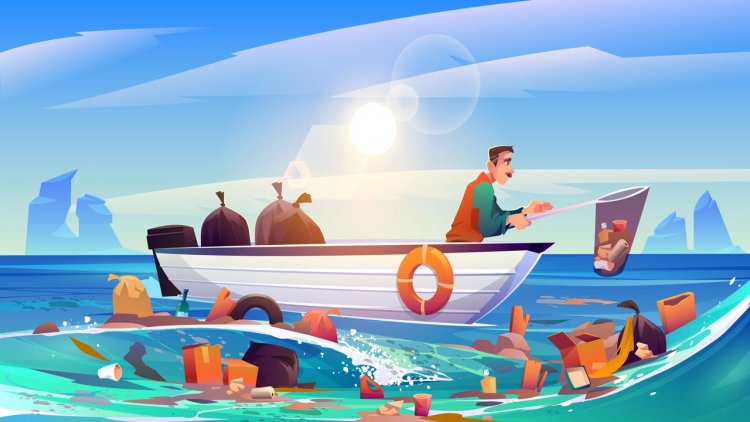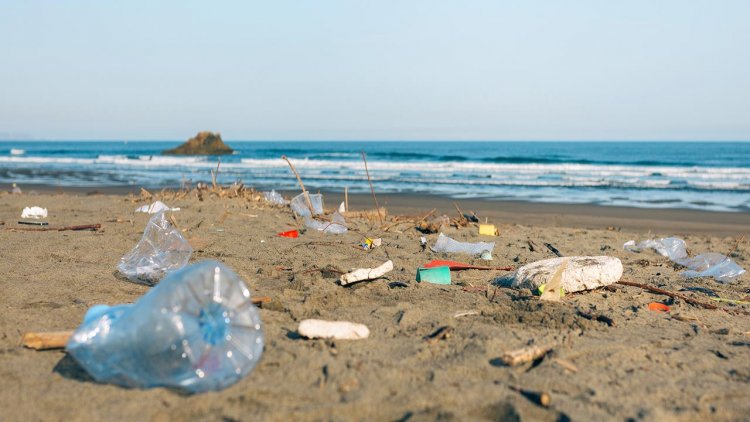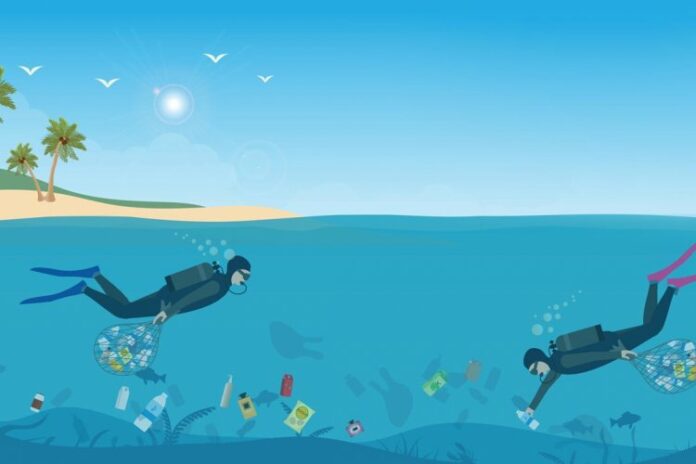The Messina Strait, a submarine bridge separating the island of Sicily from the Italian Peninsula, is the area with the largest marine litter density worldwide –more than a million objects per square kilometre in some parts–, as reported in a new review paper published in the journal Environmental Research Letters.
Also, over the next thirty years, the volume of rubbish in the sea could surpass three billion metric tons (Mt), as cited in the study, whose corresponding authors are the experts Miquel Canals, from the Faculty of Earth Sciences of the UB, and Georg Hanke from the European Commission’s Joint Research Centre (JRC), where scientists carry out research in order to provide independent scientific advice and support to EU policies.
Led by the University of Barcelona, this paper gathers the results of the scientific meeting on macrolitter that took place in May 2018, promoted by the European Commission’s Joint Research Centre (JRC) and the German Alfred Wegener Institute (AWI). A team of twenty-five scientists from across the world treated issues such as data needs, methodologies, harmonisation and needs for further development.
The ocean floor is increasingly accumulating marine litter. Whereas the largest seafloor litter hotspots –likely in the deep sea– are still to be found, plastics have already been found in the deepest point on Earth, the Mariana Trench –at a depth of 10,900 meters– in the Pacific Ocean. In some cases, litter concentrations reach densities comparable to large landfills, experts warn.

Professor Miquel Canals, head of the Consolidated Research Group on Marine Geosciences at UB, says:
“The extent of marine litter on our seas and oceans is not yet fully known. The marine regions most affected by this problem are in landlocked and semi-enclosed seas, coastal bottoms, marine areas under the influence of large river mouths, and places with high fishing activity, even far from land.”
The level of waste treatment in coastal countries is decisive: the less treatment –or the more deficient–, the more waste reaching the ocean, and therefore, the ocean floor, which is a problem that affects specially third world countries”.
Plastics, fishing gears, metal, glass, ceramics, textiles and paper are the most abundant materials in seafloor litter hotspots. Geomorphological features, the submarine relief and the nature of the seafloor determine the distribution of litter items on the seabed. Ocean dynamics, —that is, processes such as dense water cascades, ocean currents and storms— ease the transport and dispersal of litter across the ocean, from coasts to abyssal plains, thousands of meters deep. However, these factors do not occur in all ocean ecosystems and also vary over time and in intensity where they take place.
Due to a gravitational effect, light waste is usually transported along and into marine regions where dense currents flow —i.e. submarine canyons and other submarine valleys— and where flow lines concentrate, such as nearby large submarine reliefs. Finally, materials transported by ocean dynamics accumulate in depressions and quiet marine areas.

The properties of materials dumped in the marine environment also affect their dispersion and accumulation on the ocean floor. It is estimated that 62% of the dirt accumulated on seabeds is made of plastics, which is relatively light and easy to transport over long distances. On the other hand, heavy objects such as barrels, cables or nets are usually left at the point where they are initially fell or got entangled.
Litter is a new threat to marine biodiversity. It is already known that nearly 700 marine species, 17% of which are on the IUCN red list, have been affected by this problem in several ways. Seabed entangled fishing gears can cause serious ecological impacts for decades because of ghost fishing. The slow decomposition of fishing nets –usually made of high-strength polymers– aggravates the detrimental effects of this type of waste on the marine ecosystem.
Miquel Canals says:
“In the Mediterranean Sea seafloor marine litter already is a serious ecological problem. In some places of the Catalan coast, there are large accumulations of waste. When there are strong storms, such as Gloria, in January 2020, waves throw this waste on the beach. Some beaches in the country were literally paved with rubbish, thus showing to which extent the coastal seabed is littered. There are also noticeable concentrations of waste in some submarine canyons outside Catalonia”.



